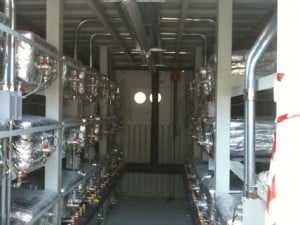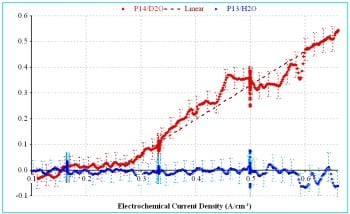A new effort to address both the ensuing global economic meltdown and an impending energy revolution sparked by Andrea A. Rossi‘s E-Cat technology has been initiated by the organisation Xecnet, Ltd [visit] of the U.K.
According to their website, Xecnet is a corporate consultancy that implements the “GEM (Global Enterprise Model) in organizations”, where “company staff can learn to apply a genuinely leaderless approach in their organizations – putting the needs of all of the members of the organization at the centre of their attention in such a way that new and vital energies are released and real operational efficiencies are made.”

In this book the proposed new economic paradigm based on energy is described. Energy will back a Human Value Unit, or HVU where one HVU is equivalent to 400 Joules of energy.
I first heard about a monetary system based on energy credits through the work of M. King Hubbert, but never really understood how it would function in actuality. Having not yet read the book by John Michell, I asked Raymond Aitken, gatherer of news at Scoop.it’s eCat economics and friend to Xecnet‘s board of directors, to provide some background.
Mr. Aitken has “been interested in complementary currencies for some time” but only recently, through discussions with author of the book ‘Rossi’s eCat‘, that he “realized the fundamental link between energy and money, and how such an energy production system could represent a transformational paradigm-shift to a ‘new world’ of human possibility.”
I first asked Mr. Aitken, how is one Human Value Unit equated to 400 Joules of energy? He replied:
“Firstly, concerning the dominant fiat monetary system:
The present fiat monetary system creates claims on real goods and services in the economy without any real and measurable linkage to the true capacity and output of the real wealth creation process (based on available natural resources, including energy, and human know-how i.e. technology). This means that there cannot be any discipline or means to guarantee that the magnitude of such arbitrary claims (the money supply) will match a corresponding increase in real goods and services.”
“This together with the fact that such fiat money is created as debt that is loaned at compound (exponential) interest means that the Western fiat (fractional-reserve banking) system is inherently and structurally inflationary, as well as non-transparent – and therefore open to manipulation and fraud, as well as requiring spiralling exponential economic growth, to create more debt-money in order to pay the interest on previous debt-money.”
“Inflation (currency debasement, or “legal counterfeiting”) is both an invisible tax of government and the large scale fraud of private financial institutions. Interest amounts to the massive and hidden transfer of wealth from the poor to the rich, leading to debt-slavery.”
“Although the conventional economic text books describe the functions of the dominant monetary system in terms of “a medium of exchange and store of value”, it is much more used as a tool of empire (centralization of power and war) and speculation (>95% of global currency movements are for speculative purposes). This monetary system was created to serve and profit from war, including economic warfare (commodity dumping etc). Being devoid of human values, this system maximizes profit on the basis of human misery and deprivation (starvation, violence, destruction, enslavement, privatization of the commons – genes, patents, money, traditional knowledge, seeds, medicine, etc).”
“Some background about the link between energy and money:
Energy is what underwrites every economic and ecological process. It is the foundation of all human wealth creation. Since money can be anything which is representative of value that can be traded for a wide range of goods and services across geographical areas, then energy itself can be used as money.”
“Unlike fiat currencies, an energy currency is a genuine commodity in universal demand, which represents the value of work already done as well as the potential of work which can be done. As a scientific unit of measure, there can be no manipulation of its value over time or place, and therefore no speculation. It can be used to scientifically stabilize and rationalize the economic process at every level. The value of commodities, services and goods can fluctuate in relation to the standard of value of an energy currency, but those fluctuations will not be speculatively driven on the monetary side (as is the case with the dominant fiat system), any fluctuations will be driven by real factors of cost and demand.”
“An energy currency easily translates into energy accounting, and therefore provides a more accurate and complete analysis of economic output and resource consumption, so it would not be possible to exclude the full human-social and ecological costs of any economic activity in the accounts, as it the case with the present system. Since no one nation or corporation can “own” energy as a currency, it will represent the first genuine international and non-political monetary system.”
“Why 1 HVU = 400 Joules of Energy:
The Human Value Unit (HVU) as a monetary measure of value was first proposed by a man called Harold who has since died. Harold’s purpose was to address the fact that our monetary system had become completely divorced from human values, and his proposition was to anchor the monetary standard of value on the daily food requirement of a human being, so that the behavior and decisions of users of money would be influenced by this humane-based measure.”
“Strange as it seems, complementary currencies have already proven how the innate values of a currency can dramatically influence the behavior of its users, even if they are unaware of monetary technicalities. Perhaps because the circulation of money represents the actualization of human relationships, then the way in which the money is created and put into circulation will color those relationships (competitive vs. cooperative etc). After much research Harold eventually settled on a scientific value of energy that was equivalent the daily human food requirement – 400 Joules.”
“The concept of the HVU relative to the creation of a complementary energy-backed global monetary system, which will belong to its users (and not to a private banking cartel that controls central government) – “a currency by the people for the people” is still at an early stage of development. We are therefore in the process of developing a global network of people who are committed to harnessing the monetary implications of the eCat to create a new money and finance system based on energy that can serve humanity, which includes restoring the ecological integrity of the planet.” —Raymond Aitken ”
In a practical sense, I asked how one would spend the HVUs? And when I spent them all, how would I get more?
“The HVUs do not need to be spent”, wrote Mr. Aitken, “they are a monetary-energy equivalence, when you buy an Ecat at say $500, then the accounting is in HVUs but you need to spend dollars to buy the HVUs which are then used to purchase the eCat.”
“Because the HVUs are based on energy-systems bought, as the value of the US Dollar goes down against energy, as it must due to Quantitative Easing (QE) etc, the value of dollars diminishes relative to the HVUs, and therefore you will need more dollars to buy the HVUs. You can always go online and buy more – we are putting a HVU-based online banking system in place.”
“Given that the technological and economic implications of the eCat are “paradigm-shifting”, the understanding of us all is necessarily in a flux of evolution, which is why Xecnet is organizing a first seminar in London this November. We need to bring together experts in economics and energy science to create a new economic approach that is grounded in genuine science, and not based on the obtuse quackery of the fraudulent monetary magicians. (It was the last chairman of the Federal Reserve, Alan Greenspan, who said “if you can understand what I am saying, I’m not making myself clear”!).”
Mr. Aitken continued with some personal reflections:
“Perhaps the most important and urgent matter is how can a complementary currency approach provide a way of financing the commercialization of Rossi’s technology? If the commercialization of Rossi’s technology depends on the corporate fiat monetary system, then it’s availability for the greater good of humankind could be distorted, in accordance with the narrow commercial and political interests of this ‘corporatocracy’.”
“We can imagine creating an investment fund for the commercialization of Rossi’s technology using a “crowd funding” approach, which is what Xecnet are trying to do with their planetpay.com site.”
“At this stage they only intend to gather pledges, to see if the financial potential from small investors around the world is large enough to represent a sufficient financial partner for Rossi, so that he can at least have a stronger negotiating position with prospective corporate investors, and if possible, to be able to commercialize his technology independently of corporate finance on a more equitable basis for the common good of humanity.”
“At some point the pledges would be converted to actual deposits of fiat money, which could be used to manufacture and distribute the first generation of eCats. During this initial stage, any HVU’s (as a complementary currency) would be backed by the fiat money held on deposit for orders worldwide. Since people would be “buying” HVU’s with fiat currency, and since the standard of value of the HVU’s would be fixed to energy (400 Joules), it would not be subject to inflation in the fiat monetary system.”
“Fiat money deposited on account, in exchange of HVU’s would act as a “store of value” (in competition to commodities like gold), which might bring in more and larger deposits of fiat money during the first phase of the fund. The ideal for this phase one would be the accumulation of a sufficiently large investment fund in fiat currency to commercialize Rossi’s technology worldwide, independently of the conventional banking system.”
“Once Rossi’s industrial eCats are commercially available, we can imagine using the same fund to establish energy production enterprises on a cooperative basis. Each energy production enterprise would serve a local-regional economic area, and would represent the phase of creating a genuine energy-based complementary monetary system to serve the specific needs and potential of any given local-regional economy, in accordance with human values and local ecological integrity.”
“The energy production enterprise would also function as a new type of local economic development bank, which would put into circulation an interest-free energy-backed currency to facilitate trade and provide working capital for local enterprises (thereby generating work), as well as the creation of investment finance (equity-based) for the development of new or existing enterprises and maintenance or creation of social capital (education and training) and material capital (physical assets and infrastructures).”
“To avoid any conflict of interest, this “bank” would be owned by its users (cooperative legal structure), who would appoint professionals to manage it. We can imagine the establishment and operation of such an “energy production bank” using a financial strategy based on the historical example of the Wara [1] energy monetization approach.”
“By the local energy production enterprise paying its workers and local suppliers in an energy-backed complementary currency, these monetary (exchange) units would enter into local economic circulation. With a demurrage charge on the demand-accounts above a certain level, HVU’s would be transferred to saving-accounts, which would create the basis of the finance part of the system. The HVU would only exist as an electronic currency, and would circulate via mobile phone, smart card and Internet devices. The required transactional platform already exists as an open-source software, called Cyclos.”
Ambitious? Most certainly.
I can’t say I completely understand energy units yet, but I certainly look forward to learning more.
What’s most encouraging is the wave of participation among peoples around the globe in response to the E-Cat demonstrations. Andrea Rossi has ignited something much more than a thermal energy device; he’s started a transformation of minds that are now busily preparing for a new kind of world, a world where people work together cooperatively based on abundant clean energy for all.
There will be fits and starts; there will be successes and failures. But, like the best strategies for long-term investing, we will ignore the noise, and focus our efforts on the big picture: there is now an open door and we can see a path forward.
We have a new clean energy technology.
Let’s not fixate on the deficiencies, but strengthen and raise the positives.
Cold Fusion Now!
Notes
[1] The ‘Wara’ system was implemented in a small town in Germany in the early 1920’s. At the time, Germany was experiencing a complete collapse of their national currency with the value plummeting to near worthlessness. During this time, Dr. Hebecker, an owner of a coal mine in the town of Schwanenkirchen, convinced his workers to accept 90% of their wages in a complementary currency called ‘Wara,’ or he would be forced to close the mine. He agreed initially to provide food that they could purchase with their ‘Wara,’ which means ‘commodity money’ in German. He also stated that the money was backed by the coal inventory. The Wara itself was paper money that also incorporated the small monthly stamp fee to prevent hoarding and encourage circulation. The Wara was immediately successful in saving the coal mine and in saving the entire town of Schwanenkirchen. Over the next several years, the circulation of the Wara spread dramatically throughout Germany and over 2000 corporations began using the new complementary currency. However, the central bank considered the Wara to be too successful and even thought it was an inflationary threat although its value was tied to the value of coal. In October 1931, the Minister of Finance declared that the Wara was illegal thus ending the success.
Related Links
Rossi’s E-cat: Free Energy, Free Money, Free People by John Michell from publisher Xecnet
Xecnet, Ltd. http://www.xecnet.co.uk/
eCat economics from Scoop.it
Technocrat: “No-money society” uses energy credits. by Ruby Carat April 8, 2011
M. King Hubbert on nuclear energy. by Ruby Carat March 22, 2011








